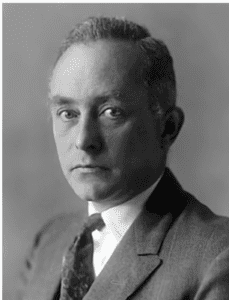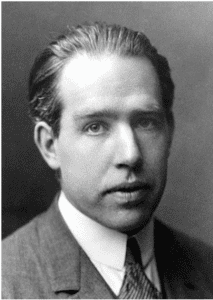Max Born, one of the early quantum physicists in the 1920’s and ’30s, proposed that between detections, quantum particles form a “probability wave.” This

Wave-Particle Duality
According to the Copenhagen Interpretation, atomic and subatomic particles sometimes act like particles and sometimes act like waves. This is called “wave-particle duality.” An electron, for example, when detected, is in its localized particle form. But between detected positions, an electron is in its wave-like form. This form is described mathematically by an equation called a “wave function.”

Copenhagen insists, “Why should science address behavior which we can never, in principle, observe? Better to ignore it, Even better, say that it doesn’t even exist!” Niels Bohr is quoted as saying, “There is no quantum world. It is wrong to think that the task of physics is to find out how nature is. Physics concerns what we can say about nature.”
So, according to Copenhagen, we can say only that an equation called the “wave function” applies when the electron is not detected. Another approach is to say that “the wave state of the electron” is a metaphor, not a description of physical reality.

The Probability Wave
Max Born held a view divergent from that of Niels Bohr. Born saw the wave function as describing a real wave. He called it a “probability wave,” and this term is still in use. Born reasoned that if calculating the wave function gives the probabilities of where the particle is likely to be detected, it must be describing the cause of the particle’s position. And if it causes something, it must be real.
However, Born was not able to pin down the exact nature of a “probability wave.” What is waving? How does it disappear from every point in the universe simultaneously at the moment the associated particle is detected? While it is common for physicists to use the term “probability wave,” its meaning is undefined to this day.
